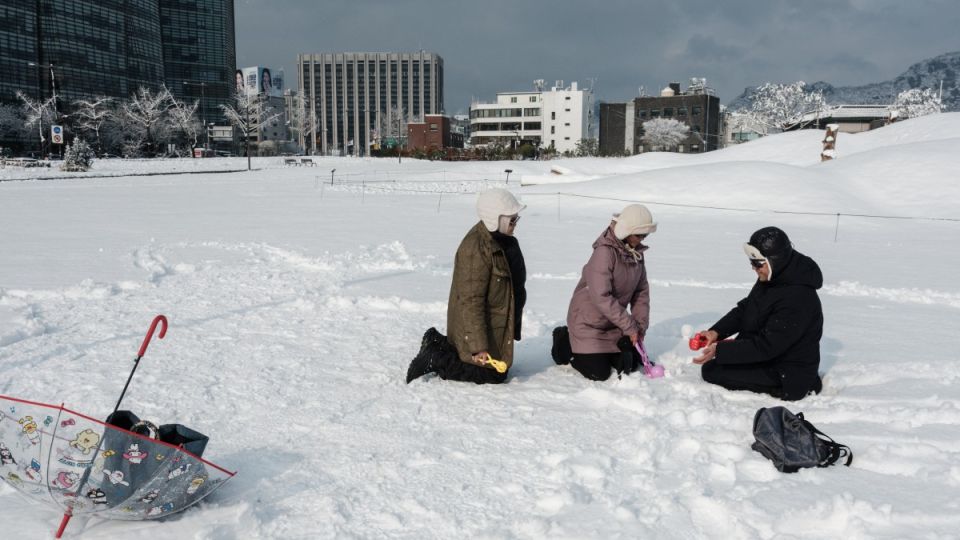August 1, 2025
SEOUL – Families with multicultural backgrounds in South Korea are experiencing greater integration into Korean society, with notable progress in children’s education, household income and social inclusion, according to the latest government survey.
On Thursday, the Ministry of Gender Equality and Family released the 2024 National Survey on Multicultural Families, conducted on a sample of 16,014 households nationwide.
Under Korean law, a multicultural family refers to a family comprising an immigrant by marriage and a person who has acquired Korean citizenship by birth, acknowledgement or naturalization, as outlined in Articles 2, 3 and 4 of the Nationality Act.
A sharp rise in higher education enrollment was recorded among multicultural children. The rate of those entering college or university jumped from 40.5 percent in 2021 to 61.9 percent last year, a dramatic increase of over 21 percentage points. The education gap between multicultural youth and their peers has narrowed from 31 percentage points in 2021 to just 13 points in 2024.
“These statistics suggest that children from multicultural families are now transitioning from being recipients of aid to active participants in society,” said Choi Sung-ji, director of youth and family policy at the Ministry. “We must now focus on unlocking their full potential.”
Household income has also improved. About 65.8 percent of multicultural households reported a monthly income of over 3 million won ($2,200), up from 50.8 percent in 2021. It was the first time this income bracket became the most common, marking a shift in economic standing, the survey showed.
Longer-term settlement is also becoming the norm. More than half, or 52 percent, of respondents said they have lived in Korea for over 15 years, up 12.7 percentage points from three years ago, while those residing in the country for 20 years or more accounted for 28.3 percent.
Employment rates for foreign-born spouses and naturalized citizens also increased, reaching 62.7 percent. However, 39 percent remained in low-wage manual labor, an increase from 2021, highlighting continued occupational stratification.
Experiences of discrimination have declined modestly but persist.
In 2024, 13 percent of respondents had experienced discrimination, down from 16.3 percent in 2021. However, most said they chose to “put up with it” rather than respond, reflecting a lack of redress or support mechanisms.
Some 71.6 percent of youth and young adults (aged 13 to 24) hoped to attend a four-year university or go on to higher education, a 10-point rise from three years ago. Reports of school bullying dropped slightly to 1.9 percent from 2.3 percent three years prior, while discrimination reports edged up to 4.7 percent, rebounding from a drop during the pandemic.
Cultural differences and marital conflicts between spouses slightly declined compared to the last survey, and more parents reported having fewer difficulties raising children. Among those with children aged 5 and under, 27.3 percent said they had no significant parenting challenges. For children aged 6 to 24, that figure rose from 11.9 percent in 2021 to 21.8 percent in 2024.
The most common challenges cited were access to emergency child care for younger children and financial burdens related to raising older children.
As multicultural families move toward long-term settlement, the government said it will pivot its focus from short-term adaptation to long-term support tailored to each family’s needs.
This includes educational programs, bilingual learning, psychological counseling and job training, to be available at around 240 family centers nationwide.
“Multicultural families should no longer be viewed merely as vulnerable groups,” said Choi. “The change in perception that they are part of Korea’s future in enriching our society with various strengths and potential is needed.”
The government also plans to scale up programs that help multicultural youth with an emphasis on career development, emotional well-being and social inclusion.
The survey respondents included different types of multicultural households. Of the total, 72.8 percent were families with married immigrants who are foreign nationals or naturalized citizens married to Koreans; 16.5 percent were families with other types of naturalized citizens; and 10.6 percent were households without a married immigrant or naturalized parent, but with children of multicultural backgrounds.
The survey, conducted every three years, assesses the status of multicultural families in areas such as education, income, parenting, employment and social experience.


